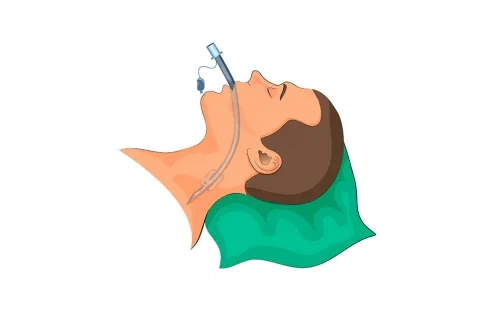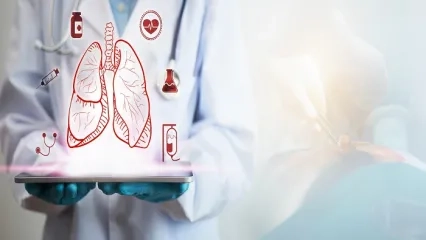Alo Yeditepe
Alo Yeditepe
What is Intubation?
Prof. Dr. Sina Ercan, Dean of Yeditepe University Faculty of Medicine and Thoracic Surgery specialist at Yeditepe University Hospitals, shared information about the concept of "intubation", which has started to be heard frequently with the coronavirus COVID-19 outbreak, and the late risks waiting for recovering patients.
What is Intubation?
"For some time now, we have been in a relentless struggle with the Corona virus COVID-19 outbreak in our country, as in almost all societies around the world. Due to the fact that it is seen in humans for the first time, there is no record of immunity in societies. Due to the very high human-to-human contagiousness of the virus in question, this epidemic, which started in China, has spread rapidly to all continents and has become a pandemic.
The most characteristic effects of the virus are on the lungs and heart. As a result, some patients may die suddenly on the street, and a more important consequence is that patients who develop respiratory failure deteriorate rapidly and need to be transferred to intensive care units. The majority of these patients need to be intubated and connected to a ventilator, in other words, since they cannot breathe strongly enough on their own, a plastic tube called an intubation tube must be inserted into their windpipes and connected to a mechanical respiratory device to provide respiratory support to the patient's severely edematous lungs. Adult Difficult Breathing or Acute Respiratory Distress Syndrome (ARDS), which we can describe as severe edema in the lungs due to a viral infection, is similar in some ways to this condition, which causes patients to become unable to breathe on their own. For this reason, patients are kept asleep and intubated until their lungs are cleared of infection and their breathing is supported by mechanical ventilators.
In fact, the intubation and mechanical ventilation process described above has been applied in intensive care units for many different diseases that cause respiratory failure in the lungs. The reason it has become frequently mentioned in this period is that the lungs are frequently affected after COVID-19 infection and an increasing number of patients have to be intubated and connected to a ventilator. This is a situation for which no country's healthcare system is prepared for such demand.
All epidemics follow a similar process, albeit varying in size and consequences, and after a significant part of the society meets the epidemic agent germ and develops immunity, it slows down and comes to a halt over time. However, many after-effects can occur after outbreaks are over. During the polio epidemic in Denmark in the 1950s, four out of every five children died of respiratory failure. Later, when doctors supported breathing by opening a tracheostomy (intubating the trachea through a hole in the front of the throat instead of intubating the trachea with a tube through the mouth) and giving air through a hand balloon (for this purpose, many university students voluntarily gave balloon air to the lungs of patients for days), the disease began to recover normally and four out of every five children recovered. However, these recovered children started to return to hospitals weeks later with tracheostomy stenosis due to the damage caused to the trachea by the tracheostomy cannulas made of steel and hard rubber materials at that time. Despite all technological and medical advances, intubation-induced tracheal stenosis is a condition that has continued to be encountered ever since.
In today's Covid-19 pandemic, there is a very intense group of patients receiving intubation and mechanical ventilation treatment. Some of these patients will be taken off ventilators as a result of their advanced medical support and treatment and will be discharged after recovery. On the other hand, our experience shows us that some of these recovered patients are likely to develop lung damage and tracheal stenosis due to intensive and high-pressure mechanical ventilation treatments.
To date, it has been observed that in some of the patients presenting to the doctor with shortness of breath, patients may be diagnosed with asthma or COPD as a result of not thinking of tracheal stenosis due to past intubations, and drug treatments for these diagnoses may be given for a long time, although they do not provide any benefit due to being a mechanical problem. During such an epidemic period, while trying to save the lives of patients by hospitalizing them primarily in the intensive care unit, attention should be paid to simple measures such as not inflating the balloons of intubation tubes and tracheostomy cannulas with high pressure, not allowing the ventilator sets to be pulled excessively to one side with tension. These precautions will help minimize the likelihood that patients who survive the critical period after successful treatment will be affected by tracheal stenosis and problems in the following days.
In this challenging period, we are discovering a new feature of coronavirus infections every day, which we have only recently begun to recognize and which have become the common enemy of humanity. While we fight this enemy relentlessly and try to prevent it from tearing our loved ones away from us, it is useful to keep in mind the health problems that have been known since ancient times and can be largely prevented with simple precautions."
About
Faculty and Year of Graduation:
Marmara University, 1993
”
See Also
- His Trachea was 95 Percent Closed, He Returned to Life with 10 Hours of Surgery
- He Couldn't Breathe; He Regained His Health with the Application of 3 Different Special Surgical Techniques Together
- Voice Can be Lost If Tracheal Stenosis is Not Detected Early
- Unable to Speak Due to Her Illness, Sibel: I Could Not Tell My Children 'I am Here' During the Earthquake
- Treated For Asthma For Two Years But Has Had A Tumour In Her Trachea
- Chance of Treatment in Patients Who Have a Tube Inserted in Their Throat to Breathe
- Young Man Who Lost His Voice Due to Tracheostomy Regained His Voice After Months
- The Cause of Shortness of Breath May be Trachea Stenosis
- It Is Possible to Prevent Possible Complications of Intubation
- The Tumor in the Trachea was Removed Without Damaging the Vocal Cords
- Survived Coronavirus, Had Windpipe Blockage Months Later, Returned From Death
- The Young Man Whose Trachea Was Completely Blocked After An Accident Regained Both His Health and His Voice
- Lung Cancer
Alo Yeditepe




